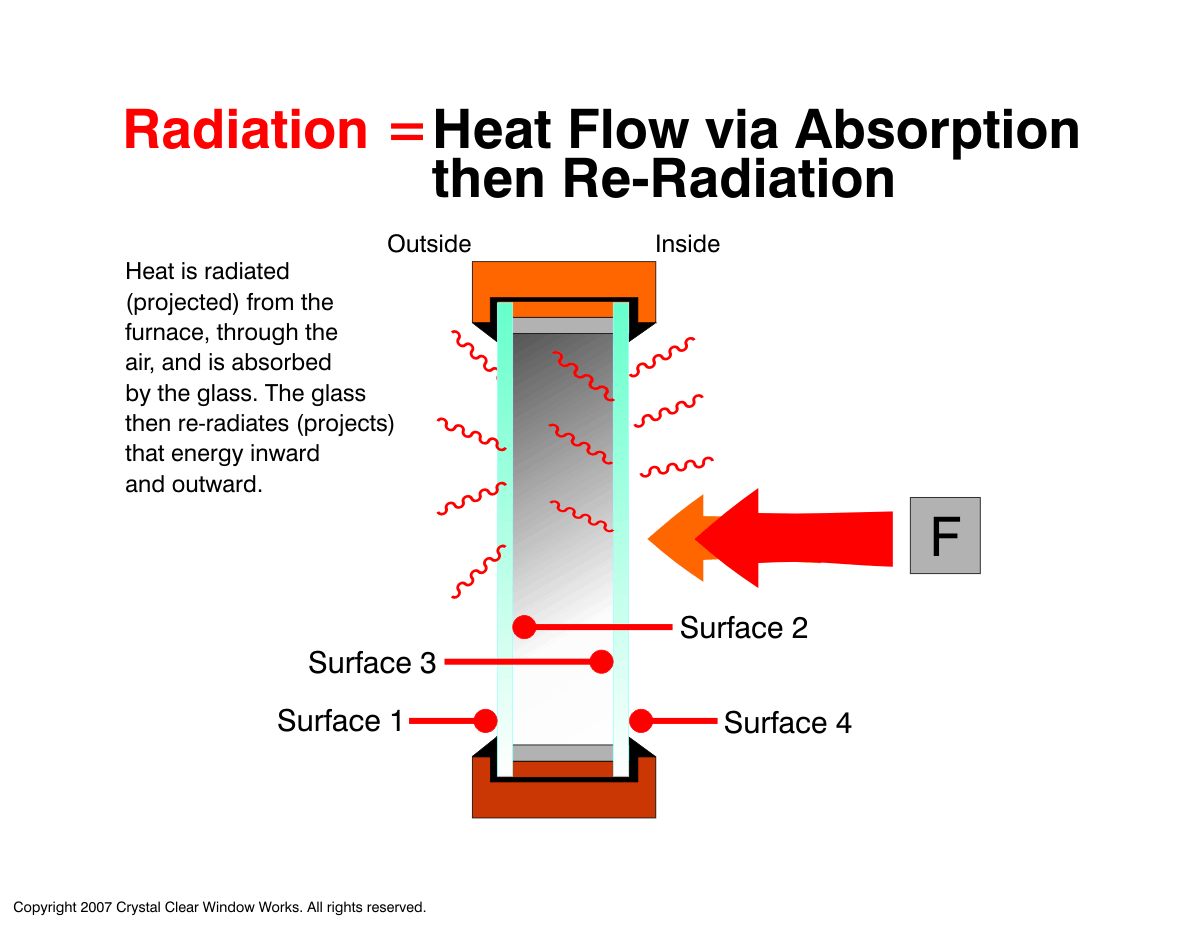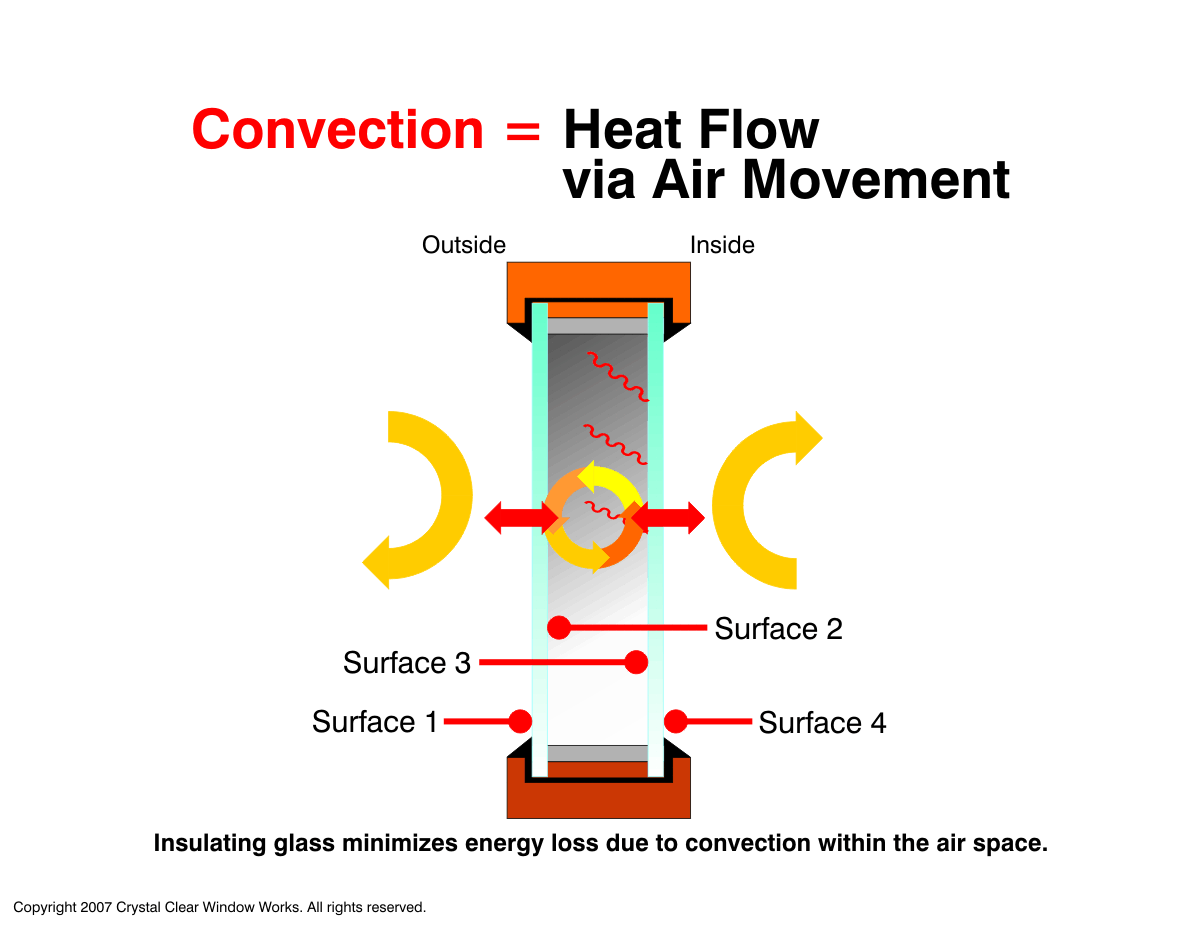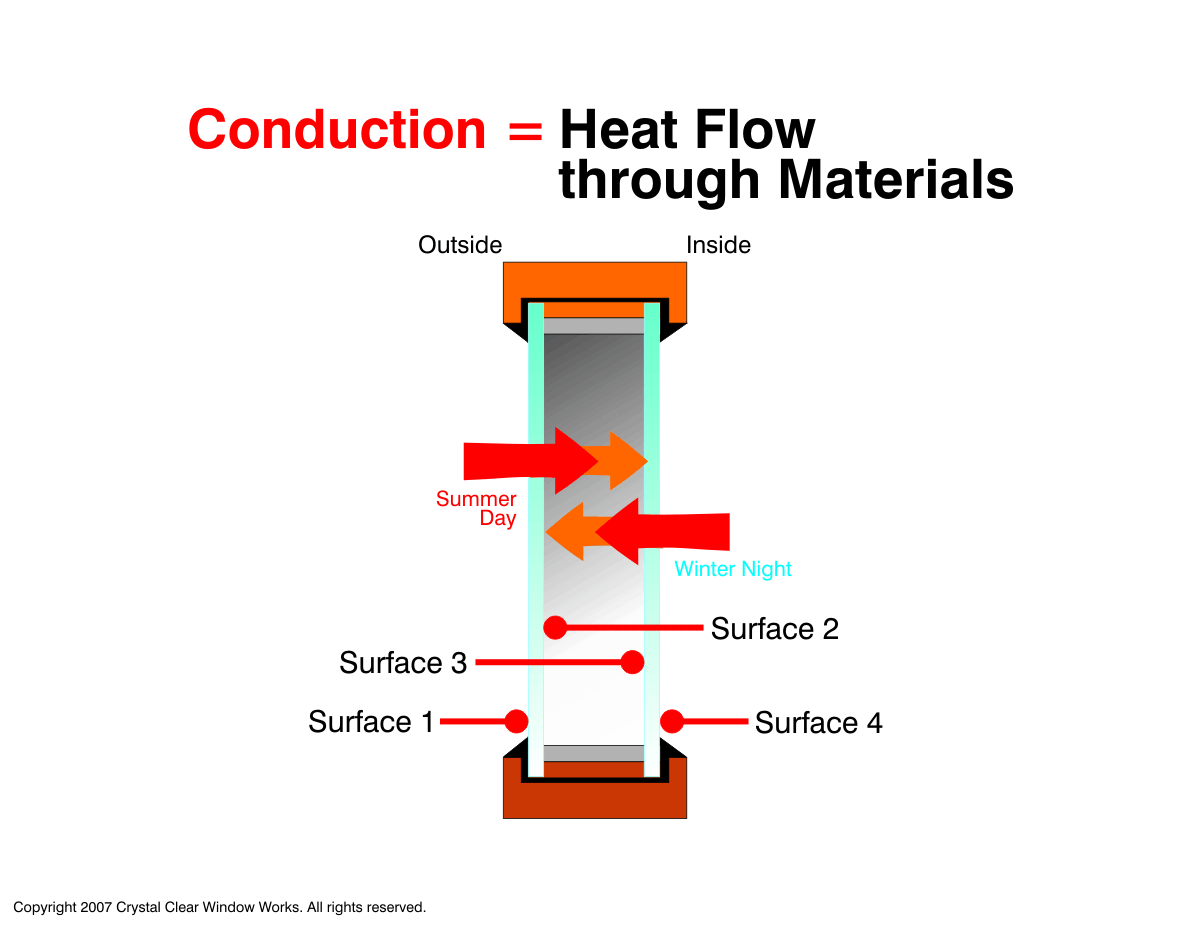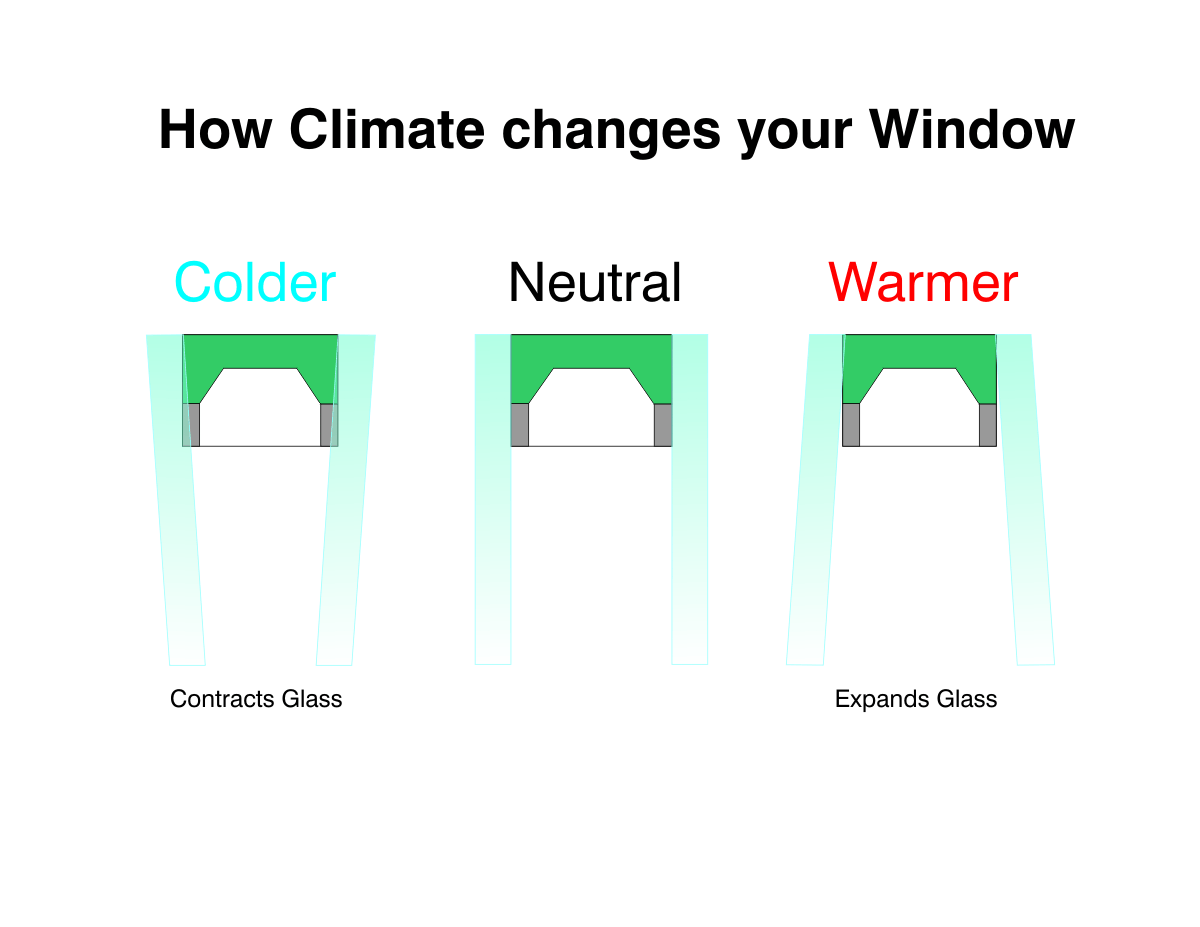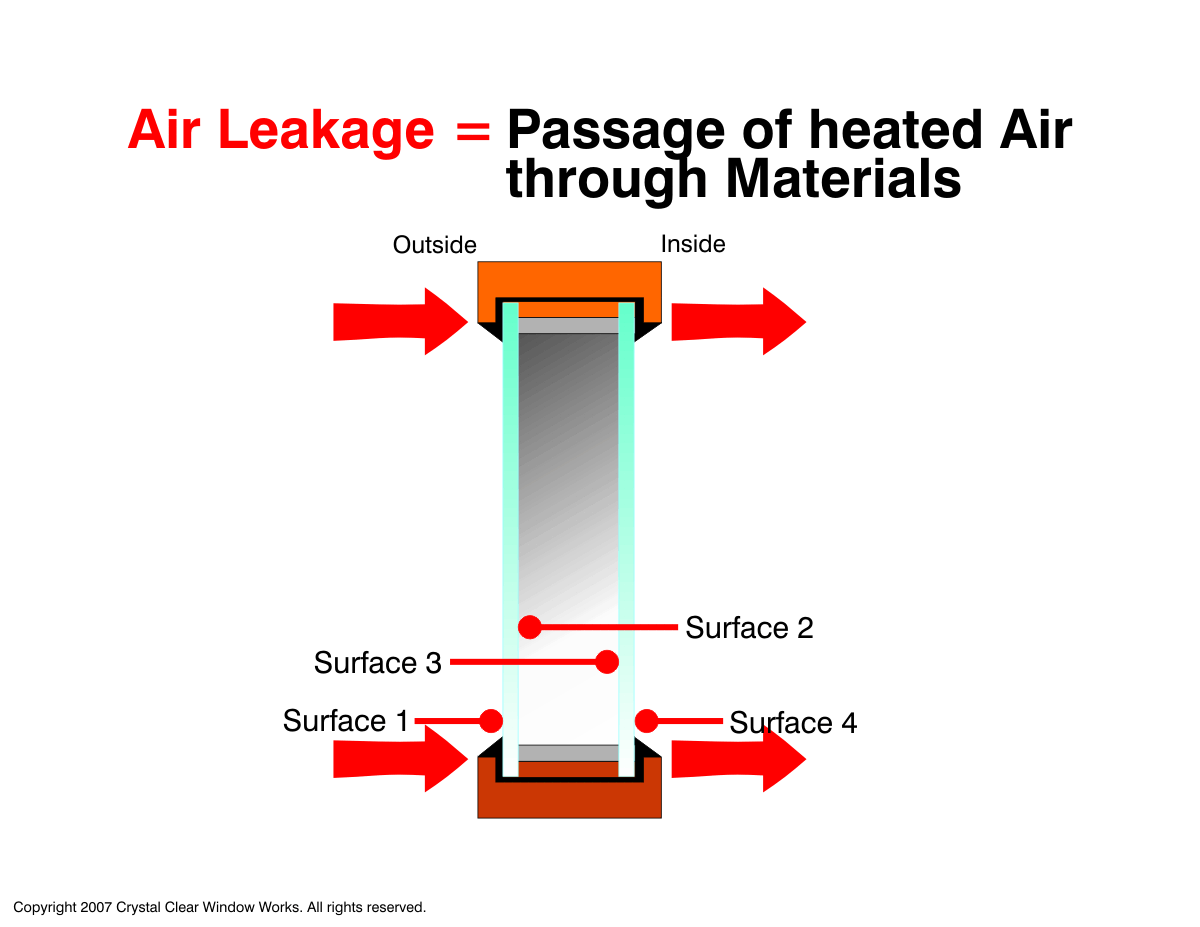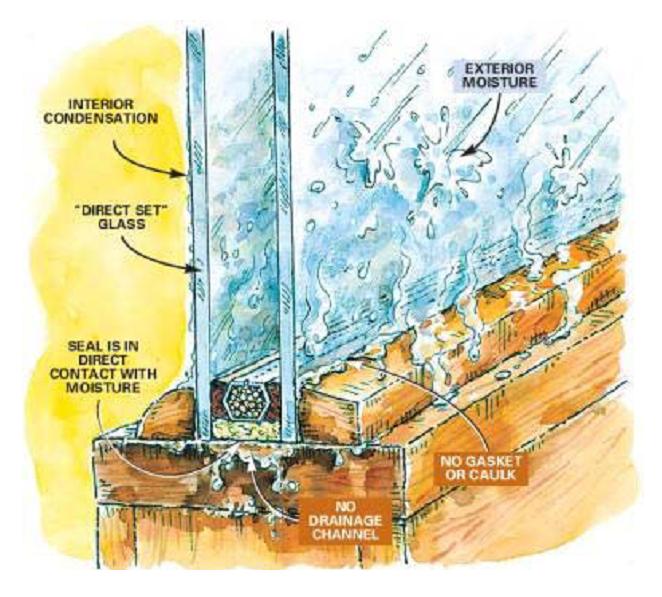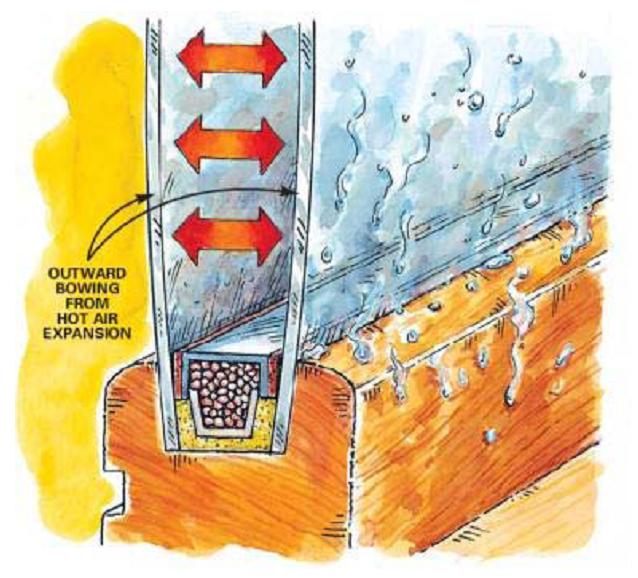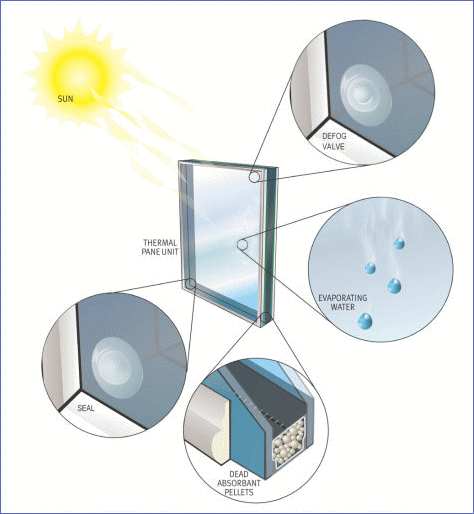















Tested
Thermal Performance Testing
It sounds unbelievable that a unit with a ventilation system in it could perform any where near as good as a new sealed unit, and over the years we have heard and read many comments stating for example:
"it doesn't work" "a unit is vacuum sealed" "the only solution is new units" "No longer a double glazed unit" etc.
Most of the people making these negative statements have a vested interest in not wanting the system to work such as: Window Fitters, Glaziers, Double Glazing Companies, Glass Companies etc .
The true reality is that our system does work and has been carried out on hundreds of thousands of units some dating back to the 1980's, there is no vacuum in any igu that is separated by a spacer bar, fitting new units is a short term solution as they will fail on average in less than 8 years, and yes a unit that has been re-engineered by us has the same thermal insulation value, the venting has no effect on the units thermal performance. Who can this be?
The majority of sealed unit that are broken down are more than 10 years old and have just air between the two panes of glass, newer units could have argon gas between them which is a heavier gas than air and improves the units thermal performance, in any event if the unit has failed then the original air/gas has escaped from the unit and been replaced with air from the environment which contains moisture, is this a bad thing? not necessarily air containing moisture/humidity is a lot heavier than dry air, ask anyone who has been on holiday in a humid country, the humid moist air actually increases the units thermal performance in the same way argon gas improves the performance, so now we have a unit with a gas (moisture laden air) that is better than air but unfortunately the moisture in the air reacts to temperature and when it is heated up by the sun’s thermal rays turns to a vapour (Steam) which can be seen in the unit, when the temperature drops the moisture vapour condenses on the glass to form droplets of water (condensation).
So a failed unit is not the end of the world and if the original unit had dry air in it the thermal performance of the unit will actually be improved with the introduction of humid air, so what if we could control this new environment! we are comfortable with the change from dry air to humid air as this improves the thermal insulation, but the fogging and condensation is not desirable as it affects the view through the unit and in time will damage the glass.
This is where our system come in, we install three products into the unit that will control the humidity inside the unit, firstly we install two vents into the external pane of glass, these vents control the air flow through the unit, controlling the air flow will prevent the unit swelling and contracting and instead of drawing air in from the breach in the seal it will now draw air through the vent, the vent also prevents dust, water, rain, and insects from entering the unit due to the micron size of the vents mesh.
Now that we have a controlled air flow through the unit we need to deal with the fogging and condensation, the air flow will deal with the surplus humidity in the same way that air bricks, soffit vents etc deal with air flow through the walls, floor and roof of a house or building, by injecting the unit with our unique and specialist anti-fog coating we can prevent the unit from fogging, this invisible coating treats all the internal glass surfaces.
Finally we inject the unit with a specialist sealer that puts a clear seal across the bottom of the units spacer bar to prevent any further ingress of water from the bottom rebate.
The re-engineered unit will vent the surplus moisture from the unit and keep the unit free from condensation for at least twenty years before the process will need re-applying.
Testing carried out on one of our re-engineered units and an identical brand new hermetically sealed unit could find no noticeable difference in thermal performance.
Testing carried out by Wolverhampton University UK.
Read the report! HERE







